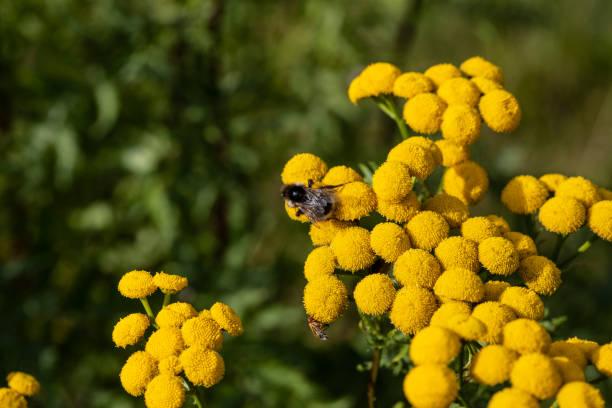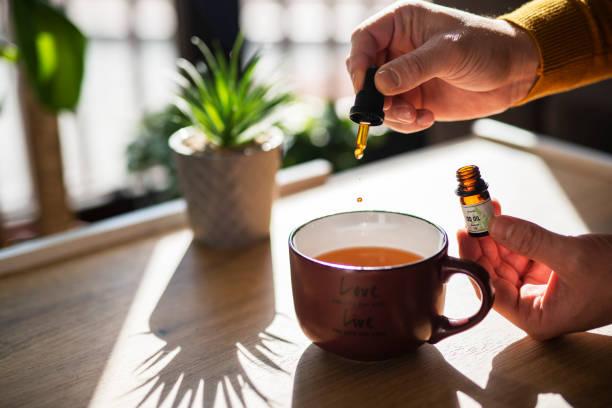Do you have an itchy throat, runny nose, itchy eyes, or even difficulty breathing? You're probably suffering from a respiratory allergy caused by pollen, animal hair, dust mites or dust. There are so many allergens in your environment, you can't stand it any longer - it's time to take action.
Good news: if some plants make you suffer in spring, others produce anti-allergic essential oils that are very useful for overcoming or even avoiding attacks.
Essential oils and allergic rhinitis
Whereas the common cold is caused by a virus that weakens the immune system, an allergy is the result of the immune system overreacting when allergenic molecules come into contact with the mucous membranes. The release of large quantities of histamine in the body is at the root of this disproportionate immune system reaction.
Consequently, if certain symptoms are similar between a cold and allergic rhinitis, essential oils with different properties are sought. While the antiviral action of essential oils is important for fighting colds, antihistaminic(anti-allergic) and anti-inflammatory properties are preferred for allergic attacks.

To effectively combat allergic rhinitis, or possibly allergic asthma, it's essential to be diagnosed by a specialist. He or she can perform tests to identify allergens. In this way, you'll be better equipped to prevent attacks, notably by reducing contact with allergens.
At the same time, essential oils fromTarragon(Artemisia dracunculus)annual tansy (Tanacetum annuum), of Roman chamomile (Chamaemelum nobile) and German (Matricaria recutita) and finally lavande vraie(Lavandula angustifolia)They'll help you get through the tough times.
Treating allergies with essential oils
Use tarragon against allergies
Tarragon is a herbaceous plant native to Siberia and Central Asia, introduced to France in the Middle Ages as a medicinal plant. Highly aromatic, it adds freshness and a hint of anise to culinary preparations. In particular, it is an important component of Béarnaise sauce.
Well-established in Provence, distillation of the whole plant yields an essential oil containing mainly estragol (methylchavicol), anethol and coumarins. This essence is antihistaminic thanks to its ability to regulate histamine release in the event of an allergic reaction.
- Directions for use: Orally: 1 drop, 3 times a day, mixed with an vegetable oilor honey, on a sugar cube or on a neutral tablet.
- For cutaneous use: 1 drop mixed with 4 drops ofvegetable oil. Massage the solar plexus.
- Diffusion: With a few drops in a suitable diffuser, it can be used over time for the whole family.
- Precautions : The high concentration of estragol requires short-term oral use.
This essential oil contains several allergens (limonene, eugenol, linalool), so it's best to do an elbow test before regular use.
- Contre-indications : Tarragon essential oil not suitable for people on anticoagulants.
This essential oil is not suitable for oral use before age 6. However, it can be applied to the skin from age 3. Finally, there are no contraindications to diffusing it.
Use annual tansy, an anti-allergenic concentrate
Annual tansy, also known as blue chamomile, is a plant native to Morocco. Distillation of its aerial parts produces an essence of a singular blue color, rich in chamazulene. Annual Tansy essential oil is particularly recommended for allergic rhinitis, as, like Tarragon essential oil, it is antihistaminic.
It also has the advantage of containing camphor, a molecule with a distinctive odor that has mucolytic and expectorant properties. As such, it helps to clear the respiratory tract. Although powerful, it is not tolerated by all, and care must be taken when using it.
- Use: By the skin: apply 1 drop of annual tansy essential oil in 4 drops ofvegetable oil. Up to 2 times a day for up to 10 days.
- Precautions: - Highly irritating to the respiratory tract, Annual Tansy essence is for cutaneous use only. Its use requires medical advice for asthmatics and epileptics.
- It can also be neurotoxic, with an action simulating that of cortisone.
- This essential oil contains several allergens (limonene, eugenol, linalool, citral). It is advisable to test the oil in the crook of the elbow before using it regularly.
- Contraindications: Annual Tansy essential oil is not recommended in cases of hormone-dependent cancer (breast, uterus, prostate).
This essential oil is for adults and adolescents only.

Allergy relief with Roman and German chamomile
The distillation of Roman and German chamomile flowers produces essential oils with similar actions, although the two infused plants have quite different tastes. In fact Roman chamomile is powerful and bitter, while German chamomile is much milder, but shares many features with annual tansy, such as the presence of chamazulene and that remarkable blue color. Both have calming and sedative properties that can help soothe the discomfort of obstructed airways.
Their action will reduce inflammation of the nasal mucosa and allow mucus to drain more easily. Roman and German chamomile essences are also known to reduce allergic reactions.
- Use: Cutaneous: apply 1 drop of Roman chamomile in 4 drops ofvegetable oil. Renewable up to 3 times a day.
- For diffusion: 10-15% dilution in other essences
- Precautions: The use of Roman chamomile for epileptics must be done under medical supervision.
Drug interactions are possible with German Chamomile oil. Consult a specialist for long-term treatment.
The only allergen present in these essential oils is limonene, but only in small quantities. On the other hand, people allergic to asteraceae should take precautions. In both cases, it's always a good idea to do a test in the crook of the elbow before regular use.
- Contraindications: Roman and German Chamomile essences are suitable for the whole family, with the exception of pregnant women under 3 months and newborns under 3 months. On the other hand, German Chamomile essential oil may be photosensitizing and has a slight "ostroegen-like" activity.
Treating allergies with gentle True Lavender
La True lavender is a very useful essential oil for allergic rhinitis. Its calming and sedative properties will soothe the discomfort associated with obstruction of the respiratory tract. Its action reduces inflammation of the nasal mucous membranes, allowing mucus to drain more easily. Fine lavender essential oil is also a decongestant, making it suitable for younger children.
- How to use : True Lavender essential oil can be inhaled by placing 2 or 3 drops on a handkerchief to be breathed in several times a day, but is most effective in synergy.
- Precautions : The use of True Lavender essential oilAsthma sufferers should seek medical advice. Too much of it can have the opposite effect, such as arousal. Be careful not to confuse it with Lavender Aspic essential oil, which does not have the same composition and has very different precautions for use.
Note that this essential oil contains several allergens (linalool, limonene, coumarin, geraniol).
- Contraindications: The whole family can use this essential oil, with the exception of pregnant women under three months of age and newborns under 3 months of age. However, Lavender essence is not recommended for people prone to high hypotension.
Effective synergies against respiratory allergies
Anti-allergy drops
Place the following essential oils in a dropper bottle:
- 20 drops ofEucalyptus radiata to clear the airways,
- 20 drops ofTarragon and 10 drops of Roman chamomile.
- Complete with 25 mL ofvegetable oil (sweet almond, for example).
Place one drop of the mixture in each nostril, up to 5 times a day. Do not exceed 5 consecutive days of use.
Skin synergy
Place the following essential oils in a suitable dropper bottle:
- 30 drops of Annual Tansy,
- 10 drops of True lavender,
- 15 drops ofLemon Eucalyptus to unblock the respiratory tract.
- Mix in 8 mL of vegetable oil (e.g. argan) and apply to forearms 2-3 times a day for up to 7 days.

Oral antihistamine synergy
In 15 mL of vegetable oil (ideally in black cumin oil, also antihistamine) add :
- 5 mL oftarragon essential oil,
- 2.5 mL German chamomile essential oil and
- 1 mL (35 drops) of romaine.
About ten days before the usual allergy period, place 4 to 6 drops of the mixture under the tongue, 3 times a day, after meals. Maintain during the allergy period.
Relieving allergies with massage
In a tablespoon of vegetable oil (Calophylle inophyle for example), add :
- 5 drops ofEstragon essence,
- of True Lavender and
- 2 drops of Roman chamomile.
Enjoy the benefits of the blend by massaging your upper back. The benefits will also be appreciated by massaging the thorax, wings of the nose and sinuses.
Gentle, anti-allergic inhalation
Are you troubled by overly obstructed airways? Place :
- 1 drop Roman Chamomile,
- 1 drop Fine Lavenderand finally,
- 1 drop Eucalyptus radiataon a handkerchief or in a bowl of hot water.
Anti-allergic diffusion
Several members of your household suffer from respiratory allergies? Pour :
- 3 drops ofRoman chamomile essential oil et
- d'Eucalyptus radiata in a suitable dispenser.
In times of allergy, diffuse up to 3 times a day for ten minutes.



